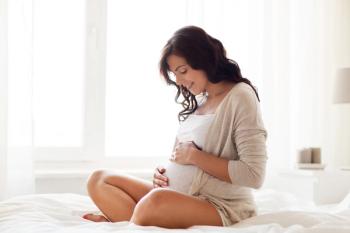
Gynecologic benignities causing obstructive uropathy
Because obstructive uropathy due to gynecologic benignities is an extremely rare, difficult, and challenging life-threatening condition, physicians should always consider the existence of uropathy.
Because obstructive uropathy due to gynecologic benignities is an extremely rare, difficult, and challenging life-threatening condition, physicians should always consider the existence of uropathy.
This is the overall finding of a literature review in the journal Chirurgia.
Obstructive uropathy is characterized by changing the structural and functional feature of the urinary system due to interruption of normal urinary runoff. Conditions include adnexal masses, leiomyomas, pelvic inflammatory disease, and endometriosis.
The Greek authors investigated the incidence and severity of obstructive uropathy caused by gynecologic benignities. They also examined the spectrum of therapeutical procedures and the complications of urosepsis.
The incidence of the disease is increasing, predicated on the age of the patient. The frequency of obstructive uropathy, also known as hydronephrosis, in the general population is about 3.1%, but by age 60 and older increases to 5.1%.
The incidence in women is roughly 2.9%.
Overall, 0.9% of annual discharges among U.S. hospitals have a diagnosis of obstructive uropathy.
The authors noted the most likely common cause of obstructive uropathy due to benign gynecologic lesions is endometriosis, which affects the urinary tract in 1% of overall cases.
Ureteral endometriosis can be intrinsic or extrinsic. For the former, the pathological tissue is advanced in the lamina propria or tunica muscularis of the ureter, whereas for the later the tissue develops around the ureter and represents 80% of overall cases.
In addition, ureteral endometriosis causes renal disease in 25% to 50% of cases, due to its silent development.
Hydronephrosis and obstructive uropathy due to gynecologic benignities encompasses at least two medical specialties: gynecologists and urologists. Clinicians should consider the disorder as a possible consequence of the presence of gynecologic benignities and particularly of ovarian cysts and endometriosis.
The authors said it is extremely challenging for gynecologists and urologists to diagnose endometriosis because of the informality of the symptoms. “Hydronephrosis will gradually be eliminated after the surgical removal of the cause,” the authors wrote. “If the patient has striking pain that does not decrease by systematic analgesia, high fever with shudder or affected kidney function, a percutaneous nephrostomy or a double j stent should be placed in an urgent basis.”
Two of the eight cited case studies of gynecologic benignities causing obstructive uropathy was a 52-year-old patient with a cystic mass originating from the right ovary, who was treated by surgical excision of the mass, and a 16-year-old patient with mature cystic teratoma, whose therapy consisted of a laparoscopic left oophorectomy.
Three other cases were a 24-year-old patient with benign ovarian serous papillary cystadenoma; a 45-year-old patient with a left ovarian dermoid cyst; and a 45-year-old patient with endometrioma of the left ovary, all of whom were treated with surgical excision of the mass.
A 29-year-old-patient with endometriosis underwent a double pigtail ureteral stenting explorative laparotomy, while a 30-year-old patient with bilateral intrinsic ureteral endometriosis scheduled a nephroureterectomy bilateral reimplantation of the ureters.
The final case study was a 44-year-old patient with right extrinsic ureteral endometriosis, whose treatment consisted of a combination of adhesiolysis, endometriosis excision and right pigtail ureteral stenting.
Larger studies and case series are needed to fully understand the frequency of obstructive uropathy due to gynecologic benignities, according to the authors.
__
Reference
- Peteinaris A, Syllaios A, Schizas D, et al. Gynecological Benignities Causing Obstructive Uropathy. Review of the Literature. Chirurgia. 2020. 115(5):579-584. doi:10.21614/chirurgia.115.5.579.
Newsletter
Get the latest clinical updates, case studies, and expert commentary in obstetric and gynecologic care. Sign up now to stay informed.











